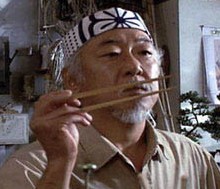This question was posted on my personal blog, and as it raised such an important point, I thought it deserved it’s own post on here:
“I follow your Blog and PDR progress with interest but thought I would raise one comment with you to discuss (or ignore if you wish!). PDR sounds great and full of really useful techniques…. but what stops me signing up is the belief/concern that these types of classes can make you more aggressive as a person. Gaining ‘confidence’, ‘awareness’ and ‘self belief’ to deal with situations is one thing but this can often translate into someone being or being perceived as more aggressive.
“I know friends who have taken up Jiu Jitsu and after a few months they were talking about having ‘much more confidence’ and ‘ability to handle themselves’ should the need arise but my overwhelming thought was that they had become more aggressive as a person (attitude, presence and even down to how they walked down the street… which in my view could result in more confrontations with the wrong people?).
“I’m wondering whether this question has ever come up in the PDR world? How does PDR make people more confident without making them more aggressive (perceived or actual)?”
The short answer is no, absolutely not. But clearly that’s not sufficient, so let me address several of the points in turn.
First off then, and this is a common misconception, we don’t teach “techniques”, we teach principles. The distinction is sometimes subtle so I’ll explain: a technique implies that when attacked like A, you always do technique B, e.g. the bad guy grabs your shirt, so you clap him over his ears (a commonly taught women’s self defence technique).
There are several problems here: not only do you now need a technique to deal with every possible attack, but that technique takes no account of the scenario, and it’s the scenario that always dictates your response. Let’s put that into a couple of scenarios:
“Have you seen my kid, she’s missing, please help me!”
1) Someone violently grabs your shirt, yelling in your face. It takes you a moment to realise it’s a distraught woman yelling “Have you seen my kid, she’s missing, please help me!”. In that moment of reaction, do you still clap her over the ears? If you’ve trained it a thousand times to the point it’s instinctive (a key aim of traditional technique based systems) you just might! Clearly that technique based response is far too much violence for that scenario.
2) At a party with a friend, you see a man you recognise peering over the balcony. You go over to say hi and he immediately grabs your friend’s shirt and throws him over the balcony to his death. Startled, you freeze for a second and he grabs your shirt… Now this shirt grab is deadly attack, so is an ear clap a sufficiently violent response or can you now use lethal force to defend yourself? Of course you can, the force you can use in defence of yourself is proportional to the threat, so here an ear clap isn’t enough!
That for me is the key reason that technique based self defence classes are a turn off, which is why we don’t like to use the term “self defence” but rather “personal safety”.
We don’t teach techniques, we teach principles.
I realise that I haven’t answered the question yet, but that was an important point to address. The next big difference between traditional martial arts / technique based self defence and the Personal Defence Readiness, is that we teach 2 additional layers of protection, before physical defence ever comes up. Succinctly then, we have: Detect, Defuse, and Defend.
Detect: Our students are taught to detect a potential violent encounter at an early stage, sometimes before they are even aware what the specific threat is, and avoid it. This sounds easy to say and is often breezed over by traditional systems, but this is absolutely fundamental to the whole PDR and SPEAR System training. It involves instincts, intuition, emotions, feelings, social conditioning, human psychology, fear management and is absolutely NOT a small or insignificant topic.
Read how one of our students effectively defended herself and child, by detecting and avoiding a predator.
Defuse: What do you do when someone is screaming and shouting in your face, but hasn’t actually physically attacked you yet? We teach skills to actively defuse violent confrontations that you’ve been unable to avoid. Again, a large component of defusing violent confrontations is firstly fear management and emotions, but also psychology. Understanding what bad guys want and don’t want, helps to make better decisions that can minimise your worth as a target.
“Oi fella, got a light mate?”
For example if someone just stops you in the street and asks for a light, that could be the precursor to a mugging; “the interview” it’s often called. Whether you may realise it or not, you are already in a violent confrontation that’s seconds from going bad, and you’d better be able to defuse that.
Defend: Only as a last resort do PDR students defend themselves, and we not only teach a few really simple, natural and instinctive physical skills (not the fine motor skill techniques you see in traditional systems), but in many respects more importantly, our students understand and deal with the emotions and fear they will experiencee, and how to use their emotions to their advantage.
Your concern about aggression is not unique and is a general criticism of traditional technique based self defence systems. It’s like this: if your only tool is a hammer, you see every problem as a nail. So if your tools are all physical (strikes, kicks, grapples etc) you see the solution to every problem as a physical one. It sounds corny perhaps to say that PDR is different, but the emotional and psychological side is an integral core component that underpins everything we teach.
Regarding the point about confidence and walking down the street, just walking in a confident way will reduce the likelihood of you being attacked. Of course as you’d expect me to say, it depends on the scenario but muggers for example want easy, compliant victims, so they look for timid, worried, or distracted looking targets.
 This was shown in the 1986 Victim Selection Study by Betty Grayson and Morris Stein, where they filmed people walking down the street and then showed the film individually to criminals (muggers, rapists, murderers etc) and asked them who they’d attack? They consistently picked a whole variety of people and they discovered it was basically down to how confident they were walking. The more confidently you go about your daily business, the less likely you to be picked as a possible target. As Willy Wonka said to Violet Beauregarde:
This was shown in the 1986 Victim Selection Study by Betty Grayson and Morris Stein, where they filmed people walking down the street and then showed the film individually to criminals (muggers, rapists, murderers etc) and asked them who they’d attack? They consistently picked a whole variety of people and they discovered it was basically down to how confident they were walking. The more confidently you go about your daily business, the less likely you to be picked as a possible target. As Willy Wonka said to Violet Beauregarde:
“Well, you do seem confident and confidence is key.”
 In summary then, I want to make it clear that not all self defence based systems are bad. But “self defence” is synonymous with “technique” based systems, and I don’t believe that’s the best approach to take. Aggression is clearly not a good idea, but confidence is. If you do something that makes you feel more confident, you’re already safer, just make sure that you have a lot more in your toolbox than just physical techniques. If you don’t like advice from Willy Wonka, how about Mr. Miyagi from Karate Kid:
In summary then, I want to make it clear that not all self defence based systems are bad. But “self defence” is synonymous with “technique” based systems, and I don’t believe that’s the best approach to take. Aggression is clearly not a good idea, but confidence is. If you do something that makes you feel more confident, you’re already safer, just make sure that you have a lot more in your toolbox than just physical techniques. If you don’t like advice from Willy Wonka, how about Mr. Miyagi from Karate Kid:
“Best way to avoid punch, no be there.”


{ 0 comments… add one now }